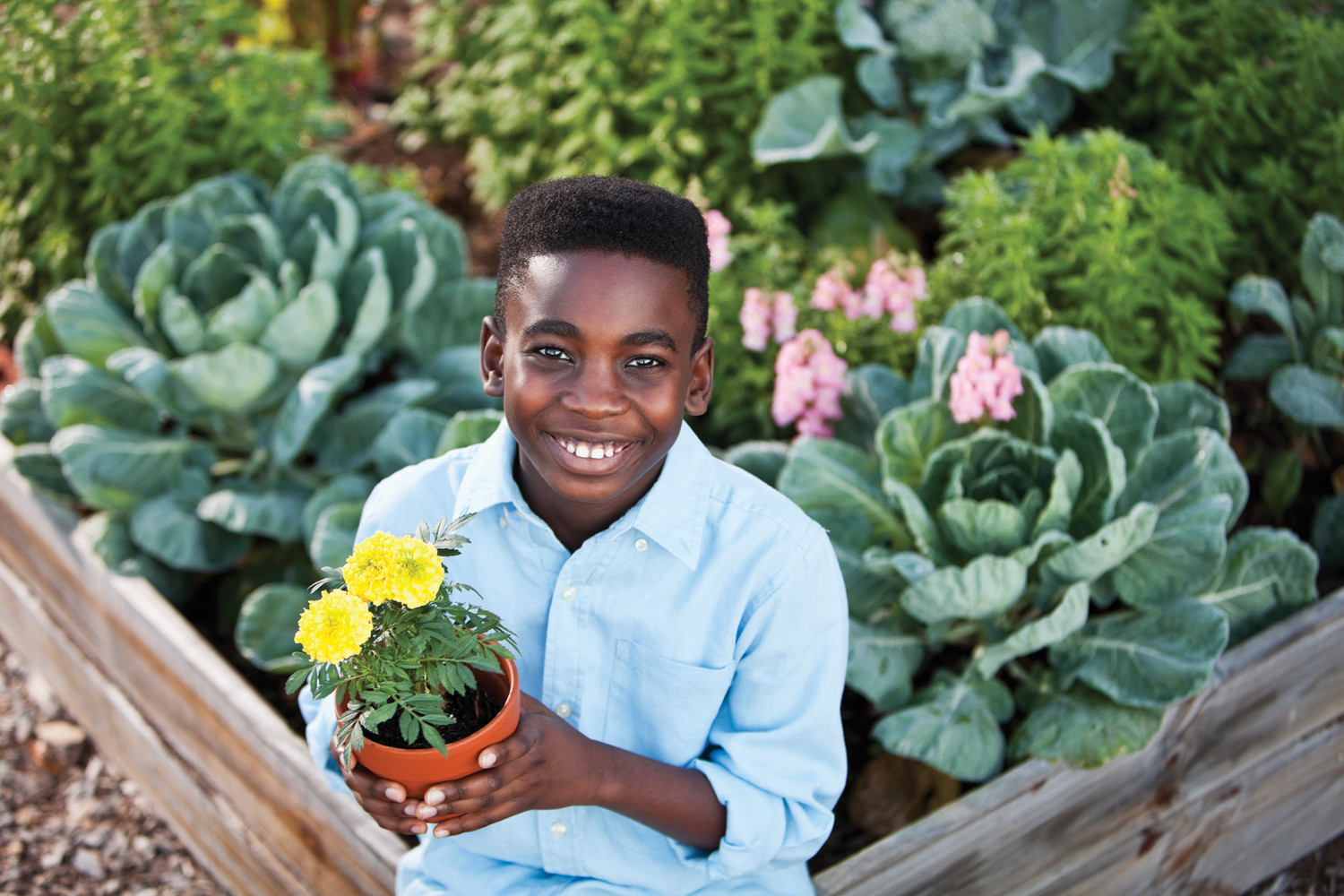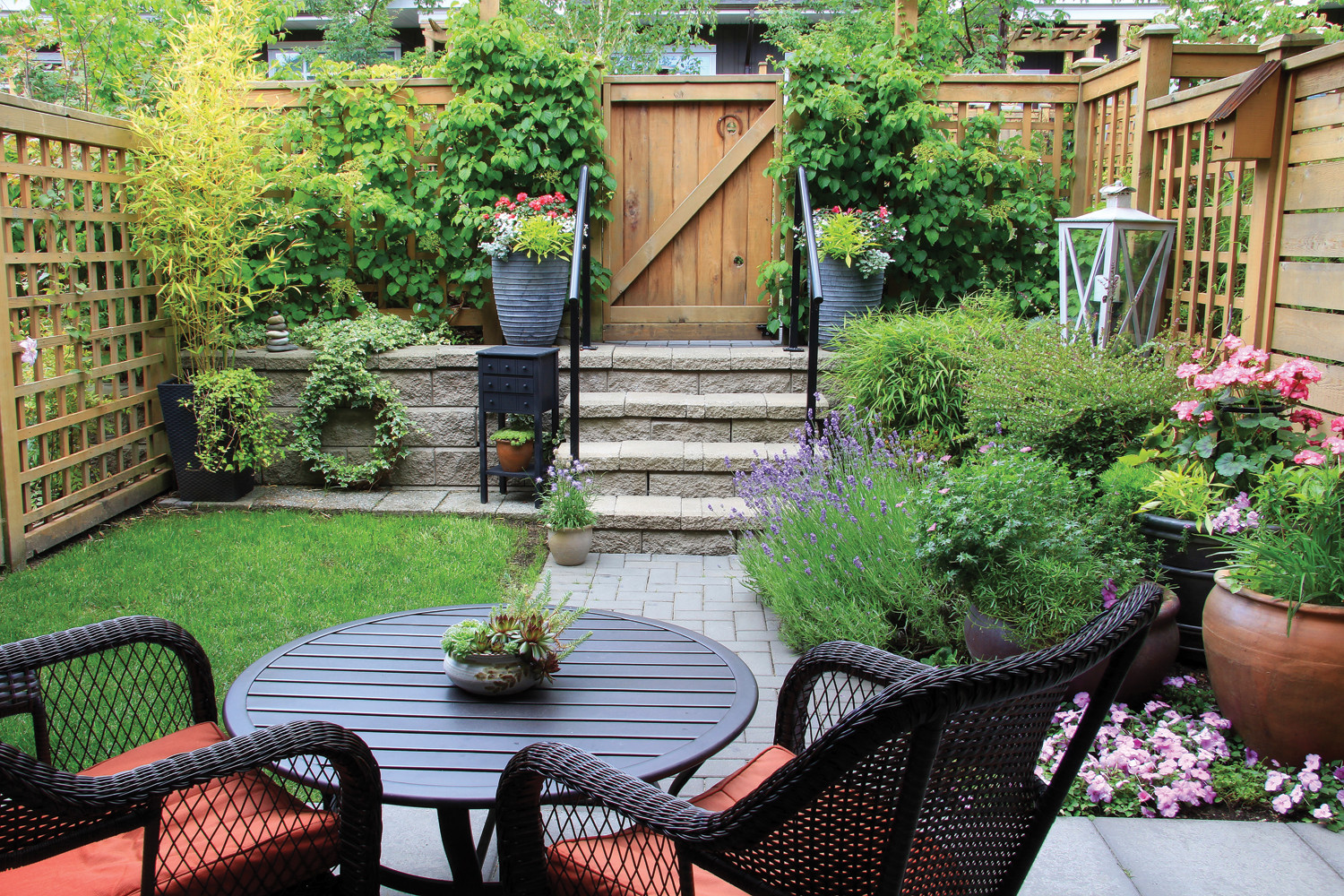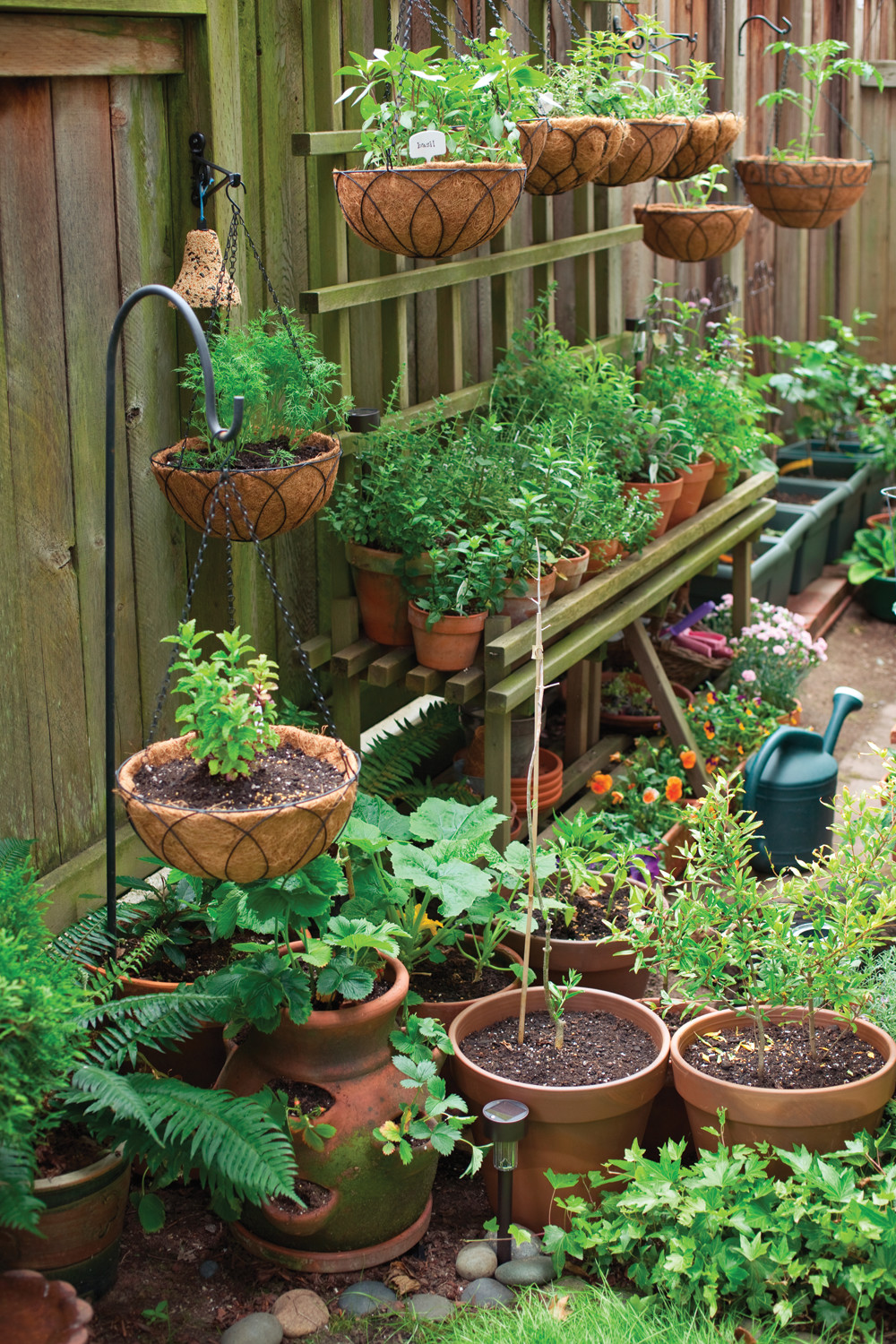
Small space gardening: a how to guide for a Healthy Yard
Brought to you by Gardening at the U of S, the City of Saskatoon, the Saskatoon Food Bank and Learning Center Garden Patch, and the Saskatchewan Waste Reduction Council Compost Coaches
Small Space Gardening
Gardening can be enjoyed by everyone! Even small spaces, such as balconies and small yards, offer creative opportunities to grow vertically and use containers.
To maximize your small space, remember:
• When space is at a premium, consider growing high value, long storage crops (like squash, cauliflower or potatoes) instead of veggies that are fairly inexpensive to buy year-long.
• Whether you’re planting into the soil in your yard or in containers, keep pests and diseases at a minimum by choosing plants that are suited to your space. Access to the sun, soil requirements, and moisture are all factors to consider when choosing what to plant.
• The amount of sun you have is often the biggest consideration, especially if you’re planting into containers. If you have a shady space, grow plants that can tolerate some shade.
• Organic matter, such as compost, will add nutrients to your soil and help retain water. Add compost to your soil and containers each year.
Get Vertical
The best strategy to maximize your sunshine is to grow vertically!
• Grow your squashes, cucumbers and pumpkins up a trellis or fence;
• Support heavier fruits with hammocks made from hosiery;
• Peas and beans can grow along fences and railings, up spiral stakes and trees, or climb taller plants like corn.
• Assemble stackable planters in your sunniest spaces;
• Cage your tomatoes, or grow them in hanging baskets that are either right-side-up or specialized to allow tomatoes to grow out the bottom;
• Plant smaller herbs or flowers in a herb spiral or vertical style planter, such as a reclaimed pallet (ensure pallets are free of contaminants);
• Many manufacturers offer speciality planters that can be set safely atop railings, hang from your walls, or stack in creative ways.
Shade Plants
Many small urban yards have quite a bit of shade due to trees, houses, and fences.
Most veggies need 6-8 hours of sun for ideal production. That said, if you only have about four hours of direct sun, you can still grow chives, oregano, mint, peas, beans, broccoli, cauliflower, cabbage, radish, onions and greens, like kale, lettuce, bok choi and komatsuna. Root vegetables may work too, such as potatoes, beets and carrots, but make sure you
plant them early since it will take them longer to produce in a shadier spot.
In areas where you will be planting directly into the soil, consider shade-tolerant plants such as hostas, ferns, coral bells, astilbe, bugbane, bunchberry, bleeding hearts, lungwort, Canada violet, and other woodland type plants. Many shade-tolerant plants thrive in rich soil, so make sure to add compost annually and spread a two to four-inch layer of organic mulch (leaves or woodchips) throughout your garden bed.

Consider Containers
If you live in an apartment-style home, have mobility challenges, or have poor soil in your yard, container gardening is an ideal solution. Some of the benefits include:
• Container gardening is generally inexpensive, especially if you use repurposed materials.
• No tools are necessary for tilling.
• Weeding is minimal.
• You can get a head start on your growing season because containers warm up quicker in the sun than the ground does and you can bring most pots indoors to protect them from early frost.
• The biggest stress to plants growing in containers is water. Depending on the size, most containers should be watered one to two times per day. If you’re unable to water that often, consider using a self-watering system that holds additional water in a reservoir below your soil.
• Almost all annual plants can be grown successfully in containers if the container is big enough for their root system and drainage is appropriate. While perennials may do well in containers during the summer, most will not survive the winter unless you protect the roots from freeze/thaw cycles (by burying the pot, putting it in a semi-heated garage, or bringing it inside).
Choosing your Container
Any container that can hold moist soil and provide drainage for excess water can be used. Choose containers that suit your budget, meet your desired look, and consider the following:
• Containers must be food safe and free of contaminants. This is especially important if you’re considering reclaimed materials, such as pallets.
• Size should be influenced by the recommended spacing on the seed package. For example, if you have a pot that is about one-foot in diameter, you have the choice of growing either one tomato plant or three to nine lettuce plants.
• The number of plants you grow per pot should be dictated by how big the plant is at harvest time and how much watering and fertilization you intend to provide.
• Online photo-sharing sites, such as Pinterest, provide great small-space and container gardening ideas.
• Specialized growing bags or reclaimed burlap bags filled with soil can be good containers for potato plants. At the end of the season, simply dump out the bag and harvest the potatoes.
For Best success
• Make sure you use a potting mix in your containers, not soil from your yard. Potting soil can be purchased from any home and garden centre.
• Potting soils that say “moisture control” or “self watering” may or may not be safe for growing vegetables. Make sure you carefully read the label on the bag!
• Add nutrients to your pots by adding compost or using a water-soluble fertilizer. If using fertilizer, follow the directions on the container and make sure not to over-fertilize.
• Use intensive gardening methods, such as square foot gardening, to increase yields.
• Permanent containers, such as raised beds, can be installed in areas where there is adequate sun and shelter.
To prevent moisture loss and damage to your plants or pots, avoid placing containers in windy areas.
• Placing gravel or bricks at the bottom of a container will help prevent it from toppling over; however, this can inhibit proper drainage and root growth.
• To prevent water rings or discolouration on your deck, raise your containers slightly off the ground and make sure the drainage holes are not blocked.
• Do not lift heavy containers on your own—use a dolly or keep them on wheeled planter trays.
• Replace potting soil every few years to minimize disease issues.
• During the winter, you can store your containers outdoors or in a shed or garage.


